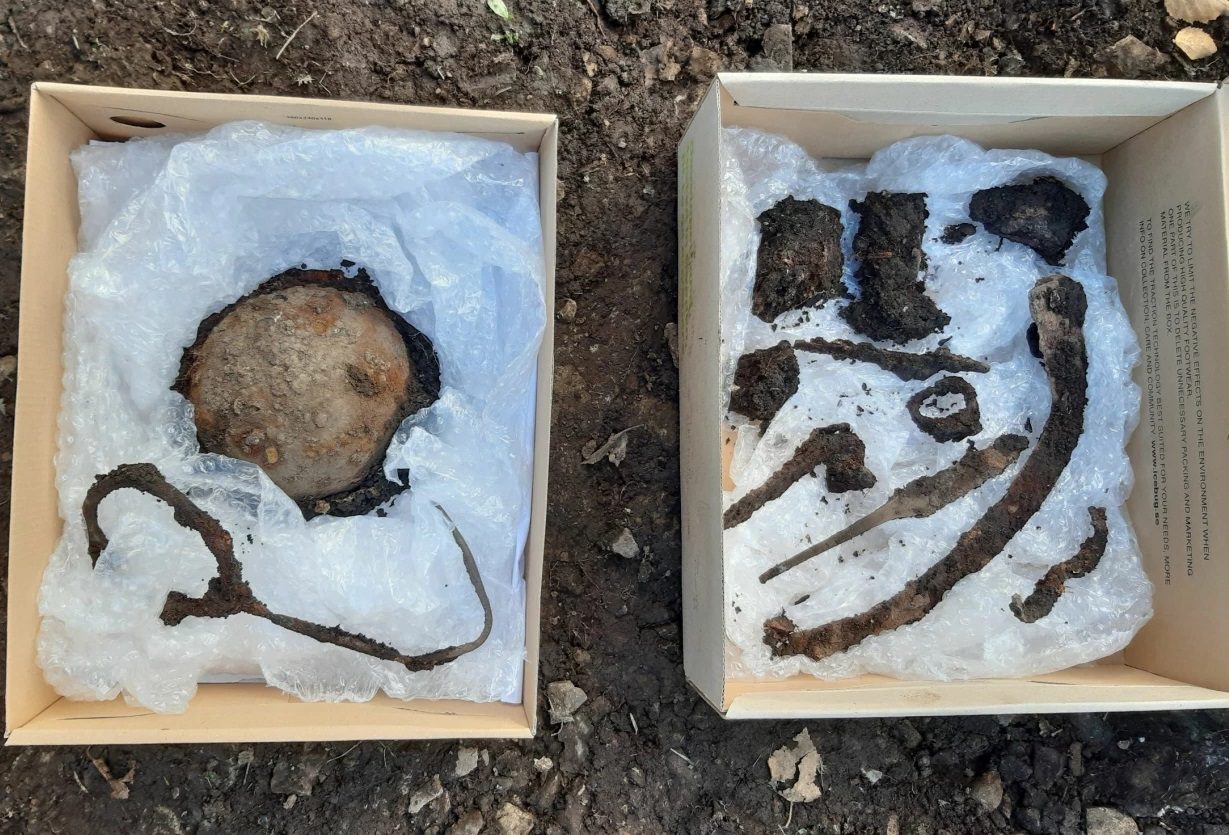Archaeologists have uncovered a Viking Age grave containing the remains of a shield and several grave goods during preliminary works for the construction of a house in Oslo, Norway.
The grave was located beneath a thin layer of topsoil on a small hill overlooking the Holmendammen lake, located in a residential area just north of the centre of Oslo where the Holmenbekken stream once flowed.
The grave is a cremation burial, accompanied with several grave goods such as fragments of a soapstone vessel, a buckle, a Celtic brooch (more properly called a penannular brooch), a pair of knives, a sickle and horse tack.
Marianne Bugge Kræmer, from the Oslo Municipality Cultural Heritage Management Office, told sciencenorway: “For now, the grave has been dated based on the artefacts it contains. This type of brooch with spheres begins to appear in approximately AD 850 and became common after the 10th century AD.”
According to the Norse sagas, Oslo was founded around AD 1049 by Harald Hardrada. Recent archaeological research has uncovered Christian burials which can be dated to prior to AD 1000, however, the latest Viking burial may predate these showing occupation in some capacity was much earlier.
Archaeologists also found a shield boss, a piece of metal at the middle of a shield, although the rest of the shield has since disintegrated over the centuries. A shield boss is designed to deflect blows from the centre of rounded shields, though they also provided a place to mount the shield’s grip.
As time went on and heater shields with curved bodies became more popular, and enarmes superseded the bar grip, the boss became more of an ornamental piece rather than functional.
Header Image Credit : Byantikvaren in Oslo







